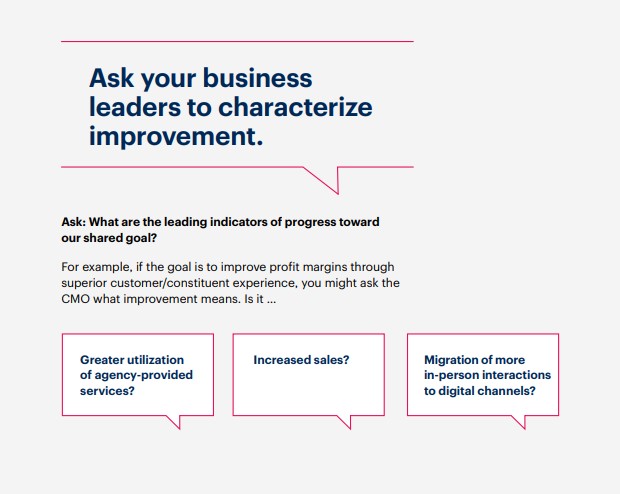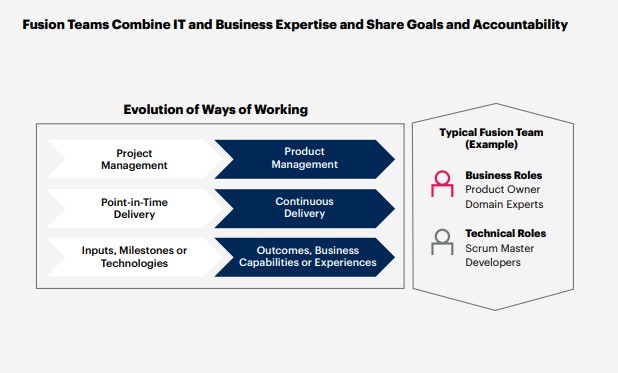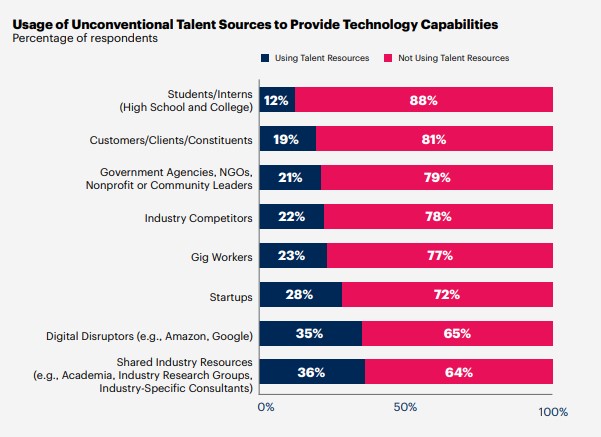1. Introduction
Low-code strategy is the latest form of company wide technological reforms and CIOs need to be on top of this trend to push their company’s into the future. A CIO’s job is to responsibly manage and implement the information and computer technology systems of a company, and that job has become more complicated and important with the global expansion of digitization. CIO’s need to respond quickly to trends and changes, and to do so must keep up with the new evolving forms of available technology. That being said, the digital world is in constant upheaval with new releases at every turn, so how can CIO’s be expected to keep track of it all and prioritize which ones are important? In this blog, we sort through the noise of all that confusion by addressing the concept of low-code strategies and identifying why we, at Kyanon Digital, believe CIO’s need to implement low-code strategies right now.
2. Low-code software advantages
Low-code software refers to any software that enables the end user (usually business teams) to create applications or websites while minimizing the amount of code needed for their creation. With a visual or graphical user interface, a drag-and-drop methodology is used enabling developers of a much more varied skill level to build and deploy solutions in a shorter time frame. By grouping together building blocks of basic code and pre-made templates, while maintaining the ability for end-users to personalize the overlaying code if they so choose, low-code software is a quick and easy way to develop personalized results.

There are many advantages when it comes to using low-code softwares:
Cost effective: By not needing to pay a highly skilled developer and by saving time on the actual coding, low-code software lowers the costs of development.
Shorter time: They have a shorter development time due to the simplified drag-and-drop method they employ over the line by line coding of traditional software development.
Flexible: Since the development time is shortened, it is far easier to create multiple solutions faster, allowing you to keep up with the changing trends and needs of your industry. They also don’t require you to develop something entirely new when you need to make an edit or update.
Increased collaboration: Because low-code platforms remove the communication barrier caused by intricate code, all levels and departments within a company can understand it and this creates a far more collaborative work environment. This leads to the generation of solutions that are more likely to suit the business’s real needs and requirements as it incorporates customer feedback, competitor changes and market changes in almost real time.
Scalable: They are scalable since the result’s various components can be edited and updated as needed and can thus grow at the rate of growth of your company.
There are many low-code software platforms out there to choose from, each with their own focus and advantages. If you don’t know where to begin in your search for one, check out our blog post on the different low-code platforms.
However, no matter the platform, low-code software is changing the way and the speed at which development can occur within a company and recognizing its advantages is a necessity when moving forward. CIO’s implementing digitalization strategies need to be aware of how this new technology can be used to benefit their businesses and keep up with trends. They need to use it to its full potential at every level within their company.

Low-code Gartner Magic Quadrant 2022
3. CIO priorities for 2023
Gartner research shows that four out of five CEOs are increasing digital technology investments to counter current economic pressures, including inflation, scarce talent and supply constraints. CIOs and other technology executives are tasked with executing digital IT strategy. Despite many in-progress digital initiatives, few are yet delivering the digital dividends that senior leadership expects.
The 2023 Gartner CIO and Technology Executive Agenda identifies four actions that CIOs can take to accelerate impact:
- Identify the type of financial impact the CEO wants and prioritize digital initiatives that support it (and pause or stop others).
- Create a visual metrics hierarchy to communicate the interdependencies across related initiatives.
- Contribute key IT talent to the business to catalyze a fusion team to accelerate prioritized digital initiatives.
- Engage talent from unconventional sources to progress internal, lower priority projects that have an indirect impact on financials.
3.1. Prioritize digital initiatives
Any of the initiatives shown here can deliver digital dividends, but ask yourself:
- Will the enterprise’s digital initiatives support the kind of financial impact the CEO wants? (That desired impact may have changed in response to recent changes in economic conditions.).
- Are those initiatives delivering dividends in the time frame expected by the CEO? A tighter economy means the enterprise needs to realize benefits even faster.

Source: Gartner
3.2. Create a visual metrics hierarchy
Metrics are critical to assess progress and measure benefits. Many individuals lead initiatives that contribute to the desired outcome and each has their own metrics for success. This complicates the financial recognition of business benefits from an enterprise perspective.
For example, the IT organization may define internal operational metrics and struggle to make the connection to how these efforts ultimately affect business performance.
The first step is to ask the CFO which financial metrics should be improved by digitalization, by how much and in what time frame.
CIOs need to demonstrate the interdependencies across digital initiatives that will collectively impact the enterprise’s financial performance — asking, for instance, how indirect operational initiatives support direct initiatives that target market-facing business outcome metrics.

Source: Gartner
3.3 Contribute IT talent to fusion teams
Once a high-impact digital initiative is identified, CIOs should contribute talent to the business leader who is focused on that initiative.
An effective business-led fusion team aligns subject matter experts, business technologists and IT experts around desired business outcomes, accelerating time to value.
Effective fusion teams often:
- Move to continuous digital delivery (away from project management)
- Focus on goals and performance metrics that share risks and rewards
- Use a matrix management approach to key digital talent (CIO as career manager, business leader as performance manager.

Source: Gartner
3.4. Find more digital talent for everyday initiatives
The competition for digital talent remains fierce, despite economic slowdowns. As fusion teams ramp up their efforts and begin to realize value, CIOs still need digital talent to deliver on lower priority, internal initiatives.
Our research suggests there are many untapped sources of talent suitable for this type of work. For example, only a few organizations regularly tap into students or cooperate with industry competitors to backfill necessary but nondifferentiating business capabilities. Most don’t use gig workers either.

Source: Gartner
4. How a low-code strategy can fulfill your needs
Low-code technology lends itself to the implementation of all the above changes that are necessary for CIOs to keep in mind. It does this by facilitating a variety of functions that allow CIOs to accelerate digital strategies.
4.1 Rate of process optimization

Low-code software accelerates the rate of process optimization. With its easy accessibility and tools that enable faster and incremental development processes, teams don’t need the tech department to modify or automate processes for them, quickly updating workflows and increasing collaboration, and a faster response to customer feedback and competitor activity.
4.2 Process standardization

Low-code also allows processes to be standardized, and by minimizing inconsistencies, make it easier to enforce security requirements and standards. Processes are organized, digitized and integrated seamlessly, with a higher level of management. By increasing visibility and control, low-code reduces risks.
4.3 Collaboration

By creating a more collaborative work environment, low-code reduces the strain on the IT department and allows developer resources to be reallocated towards other efforts like security and digital innovation.
4.4 User experience

Low-code also improves the user experience, by providing a single, unified interface with increased data management and communication abilities.
4.5 Efficiency

Efficiency is dramatically increased through low-code automation. Processes that used to be time consuming and resistant to scalability are digitized and accelerated. The workflows that fall out of the traditional business core can be managed and low-code’s adaptability allows it to resolve even unique and incidental processes.
5. Conclusion
When developing a digital strategy in 2023, CIOs must keep in mind a number of changing parts, from an evolving digital world to the changes in global trends to the innovation of new technologies. They must use the best practices that will suit their business needs and keep up with trends.
Using a low-code strategy enables them to keep their business ahead of the game, ahead of competition and fulfilling their customers’ and employees’ needs and demands. Automating processes and increasing collaboration and security throughout their entire firm is a necessary change that must be embraced. CIOs cannot afford to be left behind in the past and low-code eases that transition into the future.
As a Mendix solution partner, Kyanon Digital works hard to ensure this partnership’s goal is to accelerate digital transformation for our clients by providing excellent low-code solutions from Mendix. We’re also keen to dramatically boost the development of new apps, enhance the power of pre-built and customized low-code solutions, and expand the business ecosystem.
At Kyanon Digital, we understand that implementing a low-code strategy can be an overwhelming idea which is why we have a team of experts ready at your disposal. If you have any questions or need any advice on how to get started, don’t hesitate to reach out to us!



